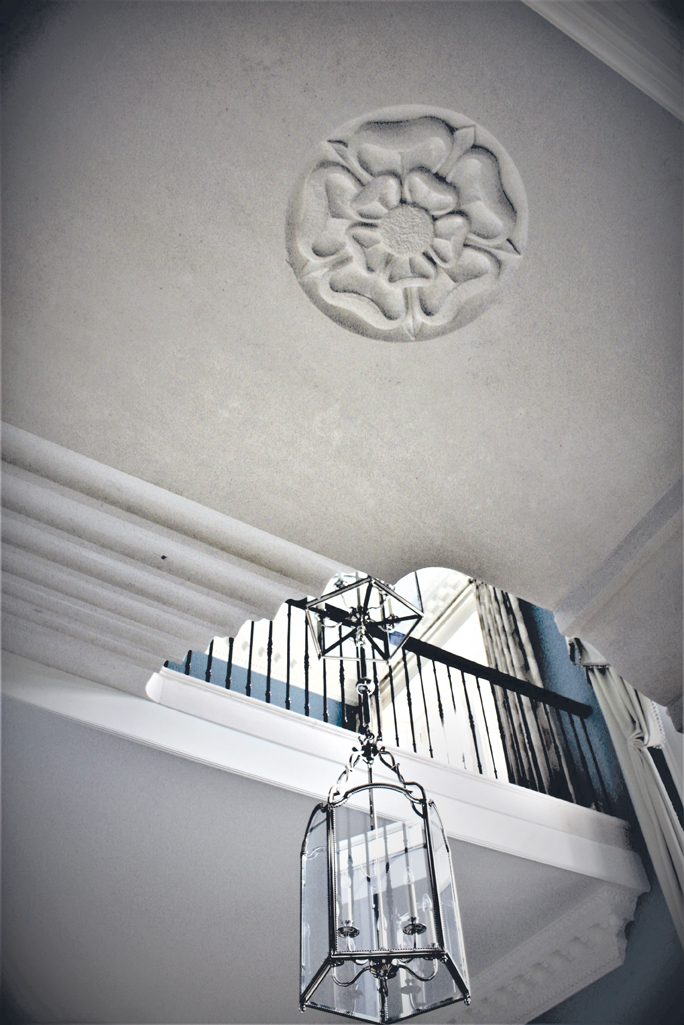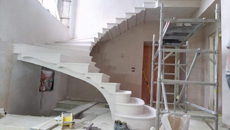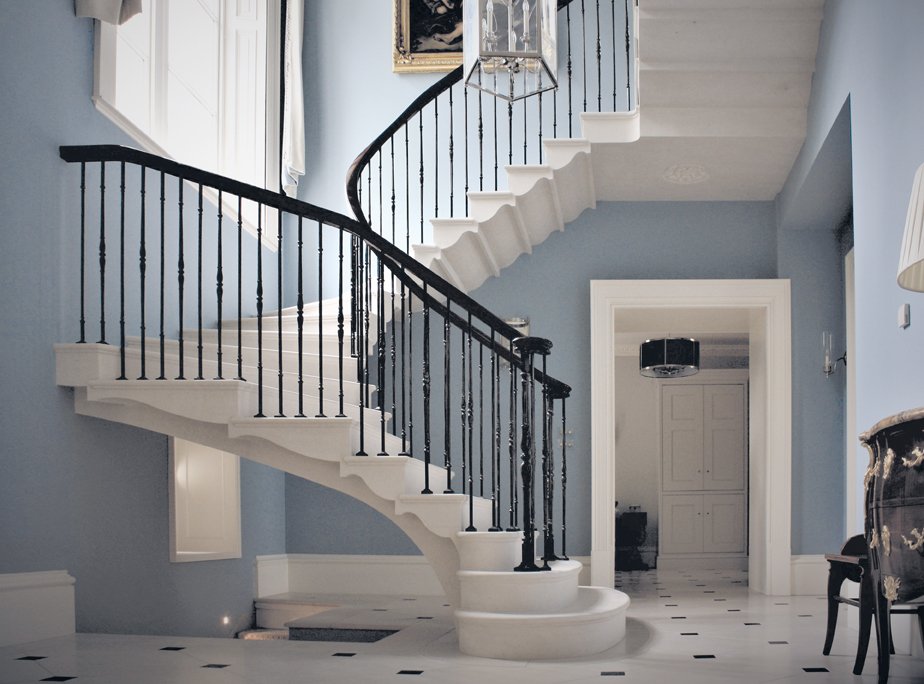In the Scottish borders a country house has undergone a top to bottom renovation, with an Ian Knapper Moleanos limestone staircase connecting the top to the bottom.
The renovation project was led by Boydell Architecture based in Galashiels, 30 miles south of Edinburgh.
Ian Knapper was contacted to create a statement solid stone staircase that was befitting the history and grandeur of the building and would set the tone as you enter the hallway.
You might say the project had a twist. The design required the bottom section of the stairs to float out into the room over a stairwell that leads to the basement.
“The challenge had been set; it was now down to our team of specialist masons to find the solution,” says Ian Knapper.
The challenge was the self-supporting floating section spanning of 2.5m from the centre of the room to the wall. The solution: four treads weighing approximately 250kg each with a sweeping curved arch supporting the structure and linking the floating treads to those set into the walls as they continued up the building. The arch provides the strength required at the bottom of the stairs.
The arch also allowed the stair to sweep around to create one continuous curve with a seamless transition between the sections of the stairs – strong, yet elegant.
The choice of stone for the project was key and discussions between the architect, interior designer, client and Ian Knapper led to the high grade Portuguese Moleanos, with its consistent light beige ground and slight greyish fossiling complementing the desired design.
Although the project was extensive, it had to remain faithful to the building. A traditional modillion profile that complemented the building’s history included elegant shaping of the underside that could only have been possible on a solid stone stair.
As with every Ian Knapper project, the team of masons working on it hand finished each tread and were able to personalise it further by adding a Yorkshire rose carving.
 The client and interior designer wanted the project subtly to reference the client’s Yorkshire heritage and Ian Knapper’s masons obliged by carving the Yorkshire rose on the underside of the first floor landing slab.
The client and interior designer wanted the project subtly to reference the client’s Yorkshire heritage and Ian Knapper’s masons obliged by carving the Yorkshire rose on the underside of the first floor landing slab.
As Ian says: “Every project is personal to the owners and designers we work with. However, I feel it’s even more pertinent when we can include a personal statement – the carved Yorkshire rose in this case – which enhances the overall design and helps tell the next chapter of the building’s history.”
Throughout the project Ian worked closely with the client, architect and interior designer to produce this truly unique feature for the hallway of this grand country house.
The floating arched section adds both drama and function, creating a sweeping curve leading from the ground to the first floor.
Ian: “There is no denying the impact and gravity of the finished staircase as you enter the building. It stands as a solid stone sculpture rising from the floor, drawing your gaze up through the building.”
The client, who prefers to remain anonymous, said: “Ian and Amanda could not have been more helpful, knowledgeable or professional. They took our brief and created it, did everything they said they would, on time and without a hitch. I would not hesitate to recommend them to anyone wanting a beautiful staircase that will go on being loved and admired for many, many years.”
Although machinery was used in the manufacture of the stairs, Ian estimates that they took the equivalent of 300-man hours to complete. It took two months to manufacture and install the stairs and used eight tonnes of stone produced as 24 carved treads and the landing slab.
Below. The stairs during construction.


